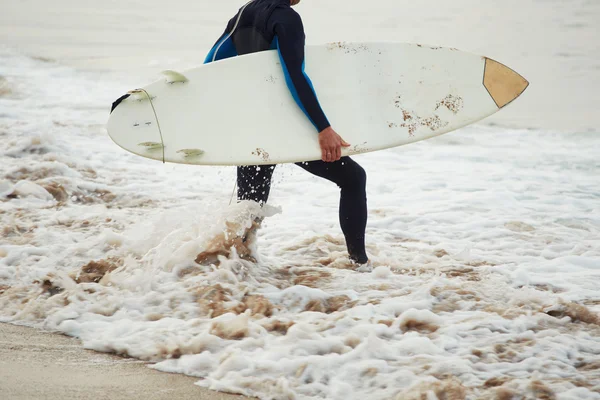A Close Look at the Design Elements That Define Fish Surfboards
- Written by Auzzi Shopping
Introduction
Surfing has always been a dynamic and exhilarating water sport, with riders seeking that perfect wave and an unmatched sense of freedom. Over the years, surfboard designs have evolved, giving birth to a wide array of shapes and sizes. One such design that has stood the test of time and continues to captivate surfers worldwide is the iconic fish surfboard. In this article, we'll delve into the world of fish surfboards, exploring their history, design characteristics, and the unique experiences they offer to riders who dare to embrace their allure.
A Glimpse into Fish Surfboard History
The fish surfboard emerged as a revolutionary design in the 1960s, pioneered by surfboard shapers such as Steve Lis and Skip Frye. Inspired by the wide, swallowtail shapes of the early kneeboards, these shapers sought to create a board that would excel in smaller, mushier waves. The result was the fish surfboard, characterized by its short length, wide outline, and distinctive swallowtail shape. Since its inception, the fish design has gained a loyal following and has become synonymous with speed, manoeuvrability, and a unique surfing experience.
Design Characteristics of Fish Surfboards
Fish surfboards stand out from traditional shortboards due to their distinct design features. Let's explore the key characteristics that define these exceptional boards:
- Short Length: Fish surfboards typically range from 5'4" to 6'4" in length, making them shorter than standard shortboards. This compact size enhances manoeuvrability and allows surfers to generate speed more efficiently.
- Wide Outline: The defining feature of a fish surfboard is its wide outline. These boards often have a wider nose and tail, providing ample surface area for planning and generating speed in small waves.
- Swallowtail Shape: The swallowtail, with its distinctive split design, is a hallmark of fish surfboards. This tail shape allows for quick rail-to-rail transitions, providing excellent responsiveness and control in a variety of wave conditions.
- Twin Fin Setup: Most fish surfboards feature a twin fin setup, characterized by two smaller-sized fins placed closer to the tail. This configuration enhances speed, manoeuvrability, and the ability to perform tight turns.
The Thrills of Riding a Fish Surfboard
Surfers who have experienced riding a fish surfboard often rave about the unique sensations and thrills these boards offer. Here are some of the reasons why riders are drawn to the fish surfboard experience:
- Speed and Glide: The wider outline and shorter length of a fish surfboard enable surfers to generate remarkable speed and glide effortlessly across smaller waves. The design allows riders to tap into the energy of the wave, maximizing their time on the face and experiencing a heightened sense of speed.
- Responsive Turns: The combination of a wider tail and twin fin setup enhances the manoeuvrability of fish surfboards. Surfers can effortlessly pivot and initiate quick, responsive turns, allowing them to navigate tight sections of the wave with precision and style.
- Versatility: While fish surfboards excel in smaller, weaker waves, they can also hold their own in larger surf. Their unique design characteristics provide stability and control, making them versatile enough to handle a range of wave conditions.
Choosing the Right Fish Surfboard
Finding the perfect fish surfboard requires considering various factors, including your skill level, preferred wave conditions, and personal preferences. Here are a few tips to help you choose the right fish surfboard for your surfing style:
- Size and Volume: Consider your weight, skill level, and the types of waves you'll be riding when determining the ideal size and volume of your fish surfboard. A knowledgeable surf shop or experienced shaper can assist you in finding the right dimensions to suit your needs.
- Construction and Materials: Fish surfboards are available in various construction materials, including traditional polyurethane foam and fibreglass, as well as modern epoxy and carbon fibre composites. Each material has its characteristics, so explore the options and choose the one that aligns with your preferences and budget.
- Custom vs. Off-the-Rack: Custom fish surfboards allow you to tailor the design to your specific preferences and surfing style. However, off-the-rack options from reputable brands can also offer excellent performance and quality.
Caring for Your Fish Surfboard
To ensure the longevity and optimal performance of your fish surfboard, proper care and maintenance are essential. Here are some tips to help you keep your board in top shape:
- Rinse with Fresh Water: After each surf session, rinse your fish surfboard with fresh water to remove any salt, sand, or debris that may have accumulated. This helps prevent corrosion and keeps your board looking and performing its best.
- Protect from Sunlight: Prolonged exposure to direct sunlight can cause discolouration and damage to the resin and foam of your surfboard. Whenever possible, store your fish surfboard in a cool, shaded area or use a board bag to protect it from the sun.
- Repair Damage Promptly: Regularly inspect your fish surfboard for any dings, cracks, or delamination. Addressing any damage promptly will prevent further deterioration and ensure the board maintains its structural integrity.
- Proper Storage: When not in use, store your fish surfboard in a horizontal position or with minimal pressure on the fins. This helps prevent the warping or bending of the board.

Conclusion
In conclusion, the fish surfboard is a timeless classic that continues to captivate surfers with its unique design and exhilarating performance. Whether you're a seasoned rider looking to explore new sensations or a beginner seeking a board that excels in small waves, the fish surfboard offers an unmatched blend of speed, manoeuvrability, and style. So, grab a fish surfboard, paddle out, and immerse yourself in the thrilling world of wave riding, where the possibilities are endless and the stoke is eternal.




























